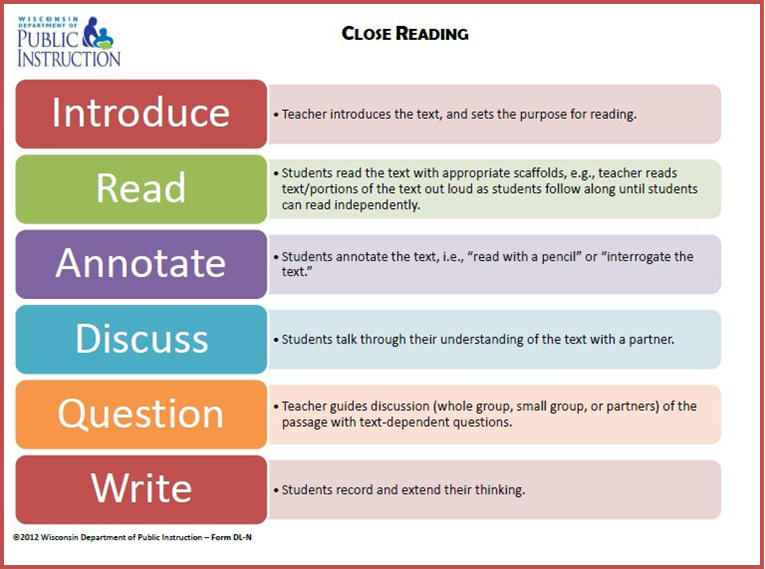I have just started doing close reading in my classroom a few weeks ago. So far, my students have been very engaged and have reported greater understanding in what they have been close reading. Those are things I love to hear!
I thought I would take minute and share how I have approached it in my classroom. I started with the document below that I found at the Wisconsin Department of Public Instruction's website. I used this to help me plan my instruction.
Next, I went in search of a good anchor chart to help teach my students what to do while they close read. I went straight to my good friend Theresa of Trifecta Book Reviews. She recommended that I take a look at Tracy Watanabe's website. I went and I found exactly what I was looking for. Here is my chart next to her original chart. Click on her chart to go to her post!
I picked out a Social Studies passage to go along with our study of Ellis Island and then introduced the concept of close reading to my class. I modeled for them how to do the steps and then set them free to try it. Here are some pictures of their papers after their first close read.
I picked out a Social Studies passage to go along with our study of Ellis Island and then introduced the concept of close reading to my class. I modeled for them how to do the steps and then set them free to try it. Here are some pictures of their papers after their first close read.
I am pretty proud of how well they did after only a short mini-lesson. They were able to make connections, identify words they didn't know, and write down questions they still had. Even better, we had a great conversation about the article after the close read.
How do you do close reading your classroom?
What are you favorite resources to use?




I enjoyed reading your post about Close Reads :) I have been using them for a couple of years now, and I know my students are more in depth readers and critical thinkers because I implement this strategy. This summer I read "Notice and Note: Strategies for Close Reading" by Beers and Probst that had a lot of great info in it. If you haven't read it yet, I highly suggest it :)
ReplyDeleteThank you so much for the great information! I will look into that! Next on my list is "Readacide" by Kelly Gallagher. I will put Notice and Note on my amazon wish list so I don't forget about it!
DeleteHi Michelle,
ReplyDeleteI appreciate how you've introduced close reading in this post, with evidence in all the photo/examples of annotations. I especially like Wisconsin Department of Public Instruction's Close Reading poster. It clearly highlights what is involved in close reading. I've found that the "Write" portion has not been included in close reading in my district so far. Perhaps it's because when I've modeled it, I spent several days in the teacher's classroom, and did not model that portion as well. Or, maybe writing is still being treated as a different subject or time of day, which shouldn't be the case. Do you get to the writing portion of close reading? If so, do you have any models?
Thanks again for this post, and for including a link to my blog.
Kind regards,
Tracy Watanabe